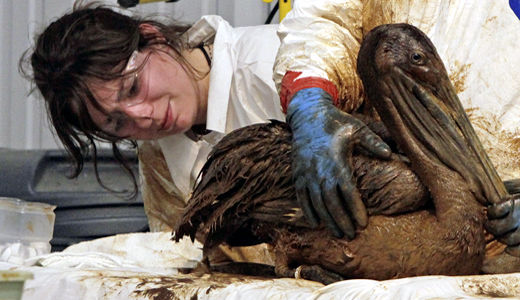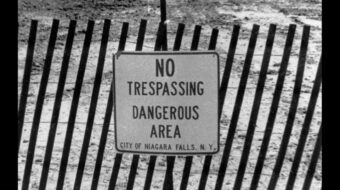
Government officials confirmed today that oil as far as 3,300 feet below the surface is traveling in clouds through large areas of the subsea Gulf of Mexico. At a news briefing, Jane Lubchenko, of the National Oceanic and Atmospheric Administration, said the subsea oil was found 42 miles northeast of the well site and also 142 miles to the southeast.
Tests confirming the spreading oil plumes were conducted by a University of South Florida research vessel.
Gulf area fishermen and New Orleans area environmentalists told People’s World about these plumes in mid-May but BP denied their existence.
“The oil is only on the surface,” BP’s CEO Tony Hayward had said on May 30. “It wants to go to the surface because of the difference in specific gravity.”
David Dixon, a local shrimper in St. Bernard Parish told this website earlier in May that “the chemical dispersants BP is using is causing oil gushing up from the bottom to break up and stay below the surface where we believe it can do permanent harm to all the life in the sea and who knows what kind of harm to people living here.”
Numerous local environmentalists echoed his concerns at that time.
The briefing by Lubchenko today was the first time the presence of plumes has been confirmed by a government agency.
Lubchenko said the oil could be compared to ash from a volcano, with the liquid rising in a plume and then forming an underwater cloud carried around by the currents.
Reflecting the concern voiced all along by Gulf residents worried about the use of dispersants the Coast Guard said today it will cut back on their use. Coast Guard Admiral Thad Allen said last night that officials are “now worried about the toxicity of the chemicals – Corexit 9500 and Corexit EC9527 – and will begin cutting back on their use. I believe they are worthwhile but I think there’s enough concern as we approach the million-gallon mark regarding the unknown implications of that amount of dispersants.”
After criticizing BP for dragging its feet on paying out economic damage claims, the White House indicated that it is backing unlimited liability for oil spills. Last night the White House said it favors the most recent piece of legislation that would drop any numerical ceiling to the amount of money an oil company like BP wopuld have to pay for damages caused by a spill. There is a strong possibility that the cap removal will be included as part of broader energy legislation. Some fear this would be risky, however, considering that passage of such legislation is still not certain.
Another government agency, meanwhile, confirmed that the BP well may be spewing 100,000 or more barrels of oil a day. BP started out saying 1,000 to 5,000 barrels of oil were leaking into the Gulf on a daily basis.
Ira Leifer, a member of the government’s Flow Rate Technical Group, said today that the 100,000 barrel per day figure is “consistent with all the data” he has seen.
BP’s own video shows black oil continuing to gush out from all around the now-capped well head.
Meanwhile, more documents have been uncovered that show BP was warned about neglect. A series of internal investigations over the last ten years warned senior BP managers that the company was repeatedly disregarding safety and environmental rules and risked a serious accident if it did not make changes.
The confidential reports which surfaced in the press only yesterday also focused on problems at BP’s Alaska oil-drilling unit that undermine the company’s pubic claims about adherence to safe operating procedures.
Photo: Workers clean a Brown pelican at a rescue center at a facility set up by the International Bird Rescue Research Center in Buras, La., June 5. The birds are covered in oil from from the Deepwater Horizon accident and are cleaned and then released. Bill Haber/AP

MOST POPULAR TODAY

High Court essentially bans demonstrations, freedom of assembly in Deep South

Zionist organizations leading campaign to stop ceasefire resolutions in D.C. area

U.S. imperialism’s ‘ironclad’ support for Israel increases fascist danger at home


UN warns that Israel is still blocking humanitarian aid to Gaza






Comments